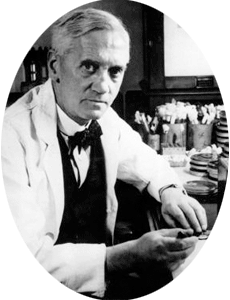
More Articles
Penicillium is best known as the mold type that gave birth to the first of the antibiotics, Penicillin. In microscopic analysis, Penicillium is often grouped with Aspergillus. That grouping is generally shown as Penicillium/Aspergillus or Pen/Asp. The reason for this grouping is that the two spore types cannot be distinguished one from the other microscopically. To differentiate the two requires seeing the underlying structure which often means culturing (or growing) the organism.
Penicillium is found under normal conditions in soil, decaying plant debris, compost piles, and fruit rot. One species has even been detected in diesel fuel.
Indoors Penicillium will grow on a wide variety of materials (substrates) including building materials, fabrics, as well as a wide variety of foodstuffs, herbs, and spices. The green mold often seen on oranges is likely Penicillium. Colors range in various shades of blue, green, and white.

In air conditioning systems Penicillium can often be detected on cooling coils and/or interior fiberglass liner. On building materials, Penicillium is one of the first or primary invaders along with Aspergillus. Both can produce toxins for the purpose of discouraging other molds invading space they have already claimed. It is speculated that some of these toxins could be harmful to humans, but this has never been clinically established. The primary invaders can be joined by a secondary invader, usually Cladosporium. With a continuation of high levels of moisture, they can be overgrown by Stachybotrys or possibly Chaetomium.
Industrial uses include cultures to help produce some cheeses, salami, and sausages. Its most well known industrial use is, of course, the production of antimicrobial Penicillin.

Most people think that the antibiotic effects of Penicillium were first discovered in 1928 by Sir Alexander Fleming, but there is a much longer history about the use of molds for medicinal purposes. The history goes as far back into the BC times. There is evidence that the ancient Egyptian, Greeks, and Indians. Uses of molds and concoctions including molds were used to combat infections in various places in Europe from the 16th through the 19th centuries. Reportedly the antibacterial properties were noticed and investigated as early as 1871, an activity in which Joseph Lister, English surgeon, famed for promoting antiseptic medicine. Even Louis Pasteur observed in 1877 that a Penicillium strain inhibited the growth of the Anthrax bacilli.
Never-the-less, it did take the organizational efforts of Dr. Fleming, after an accidental discovery to bring penicillin to the fore establishing it as a wonder drug. Returning from a vacation in September of 1928, he found Petri dishes of Staphylococcus aureus (a bacterium) contaminated with Penicillium notatum. This contamination prevented the normal growth of the Staphylococci. This accidental discovery totally changed medical history.
As Dr. Fleming famously wrote about that red-letter date: “When I woke up just after dawn on September 28, 1928, I certainly didn’t plan to revolutionize all medicine by discovering the world’s first antibiotic, or bacteria killer. But I guess that was exactly what I did.”
What's the harm?
Many people are allergic to Penicillin. Being so allergic myself and due to some family history, I am acutely aware of this situation. My mother’s brother, whom I never met, died at a time when Penicillin was considered a miracle drug that could cure virtually anything. He had a minor illness and was given Penicillin to treat it. He got worse and developed a rash. He was given more Penicillin and got worse. They continued to increase the dosage until he died. He was one of the first documented cases of a patient dying of Penicillin allergy.
While certain individuals can develop allergies to virtually any mold, research shows that Penicillium species are known to cause a number of specific allergies. Some of the more familiar health effects related to Penicillium include asthma and hay fever. Some allergies have names that are specific to certain professions or activities. Some of these are: Cheese washer’s lung, Woodman’s lung, and Moldy wall hypersensitivity.
There is a species of Penicillium that can cause infection in humans, but it has not been found in the United States.
Penicillium is a very common mold type around the world. Its metabolites form a microbial volatile organic compound (MVOC) that produces a heavy musty odor.






